149 SACD / Beethoven: Symphonies nos. 7 & 8
Description
"Where should I begin? With the music or the recording technology? Both are equally thrilling!..." (Pizzicato) "Now, without wishing to go OTT about it, this is one SACD which I think I can unreservedly recommend to EVERY reader of this website who likes classical music. I′d personally go so far as to rate it as probably the most important issue sound-wise I′ve come across in listening to multichannel CDs, indeed in my entire adult listening experience (stretching back thirty years now)…" (Terence Blain on SACD.net)
10 reviews for 149 SACD / Beethoven: Symphonies nos. 7 & 8
You must be logged in to post a review.

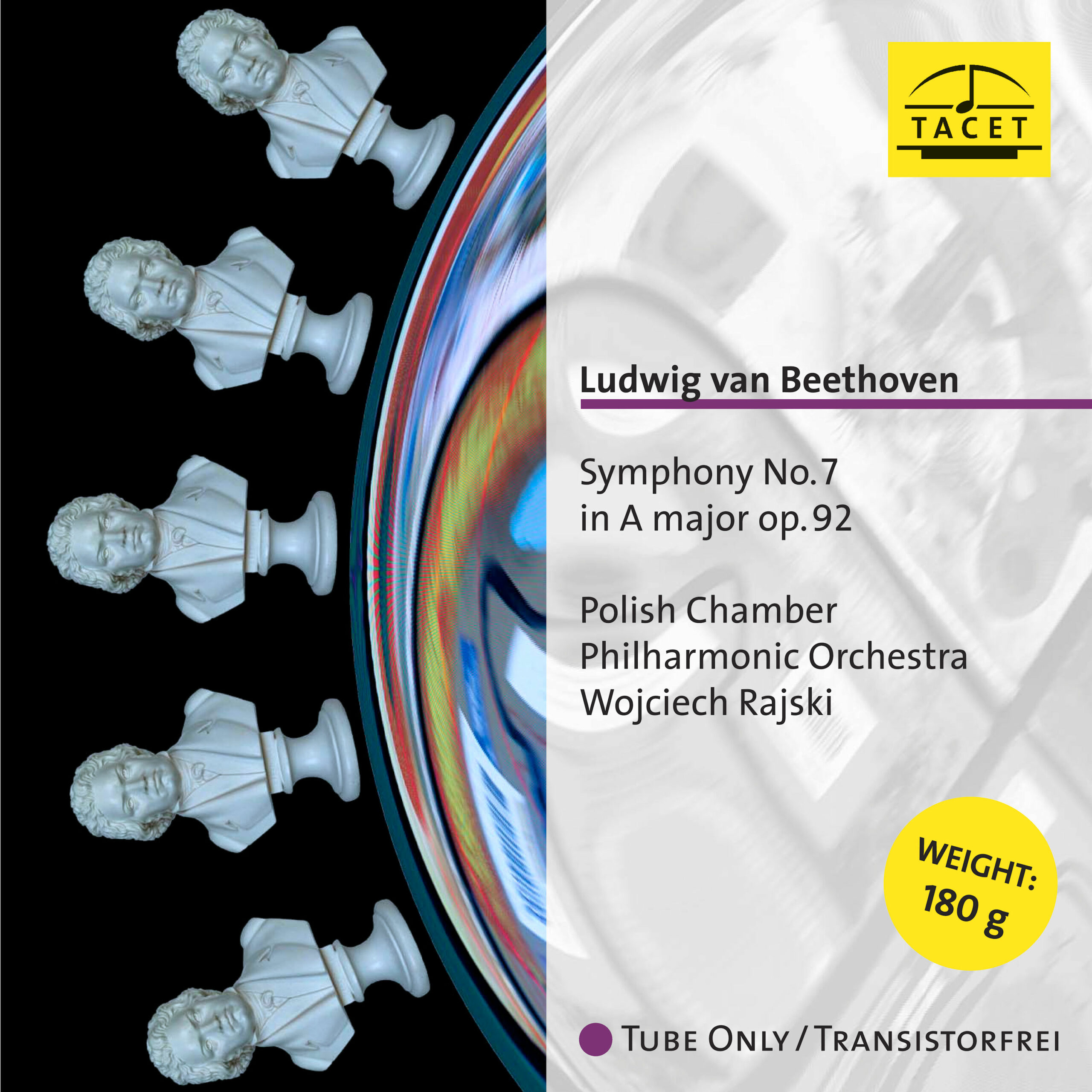
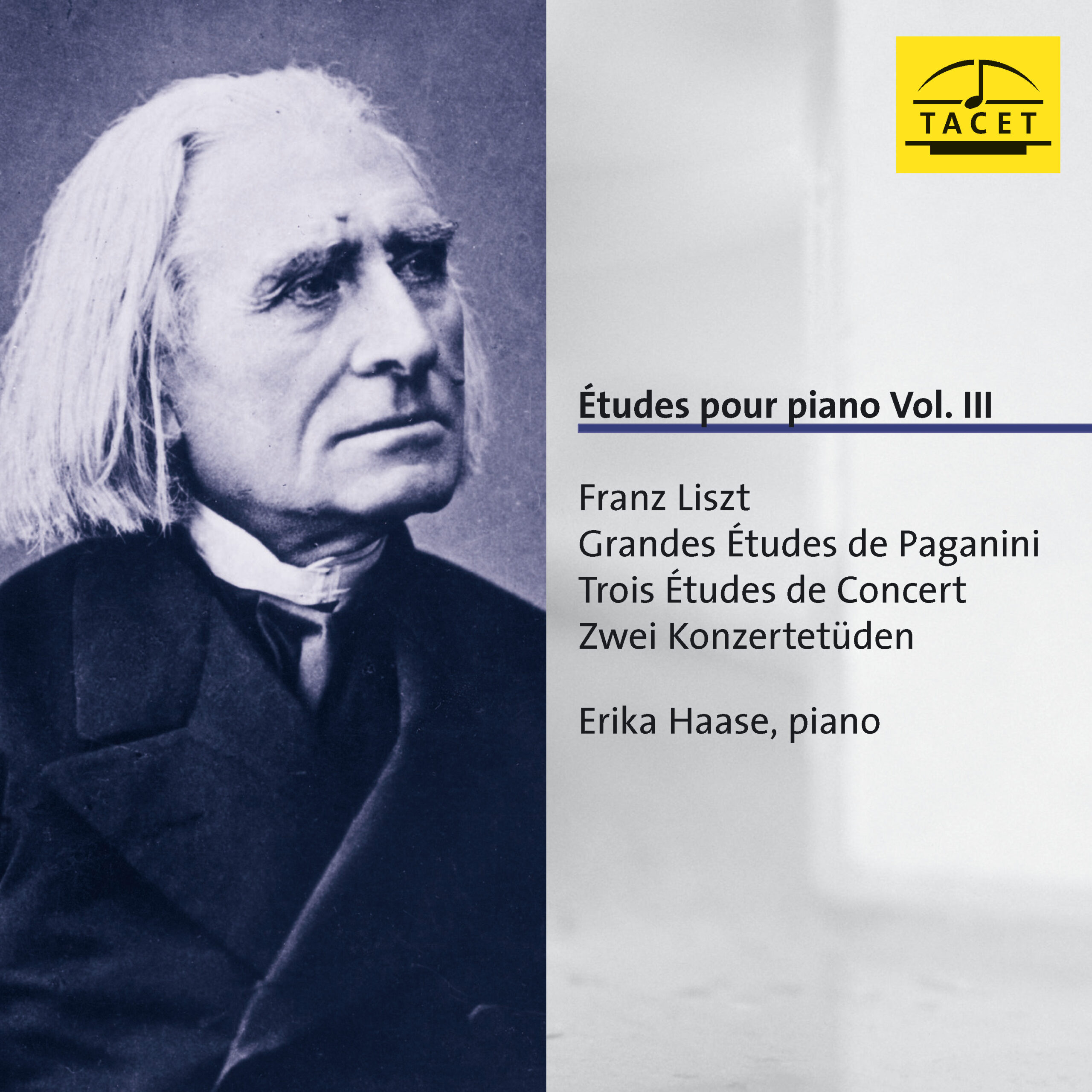
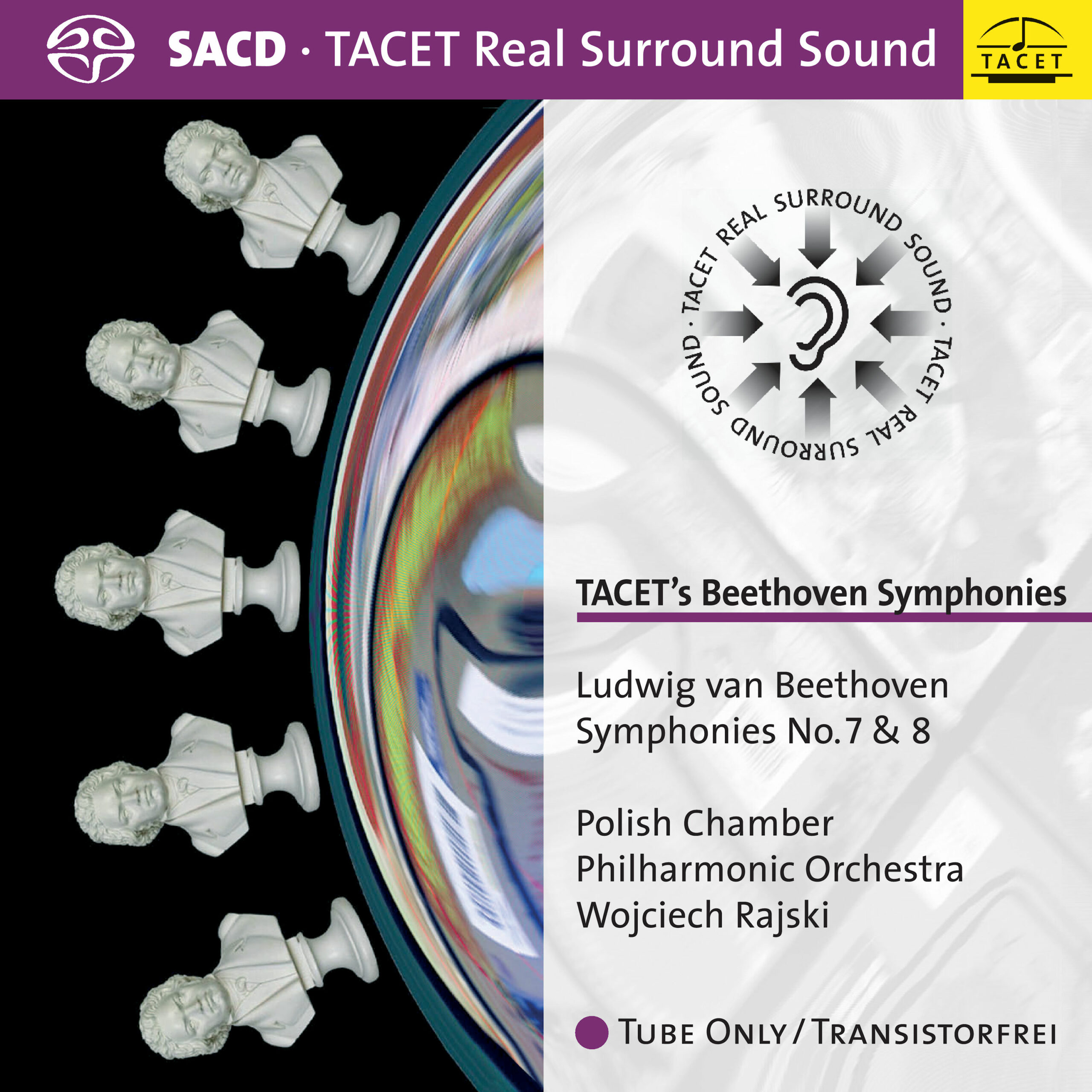

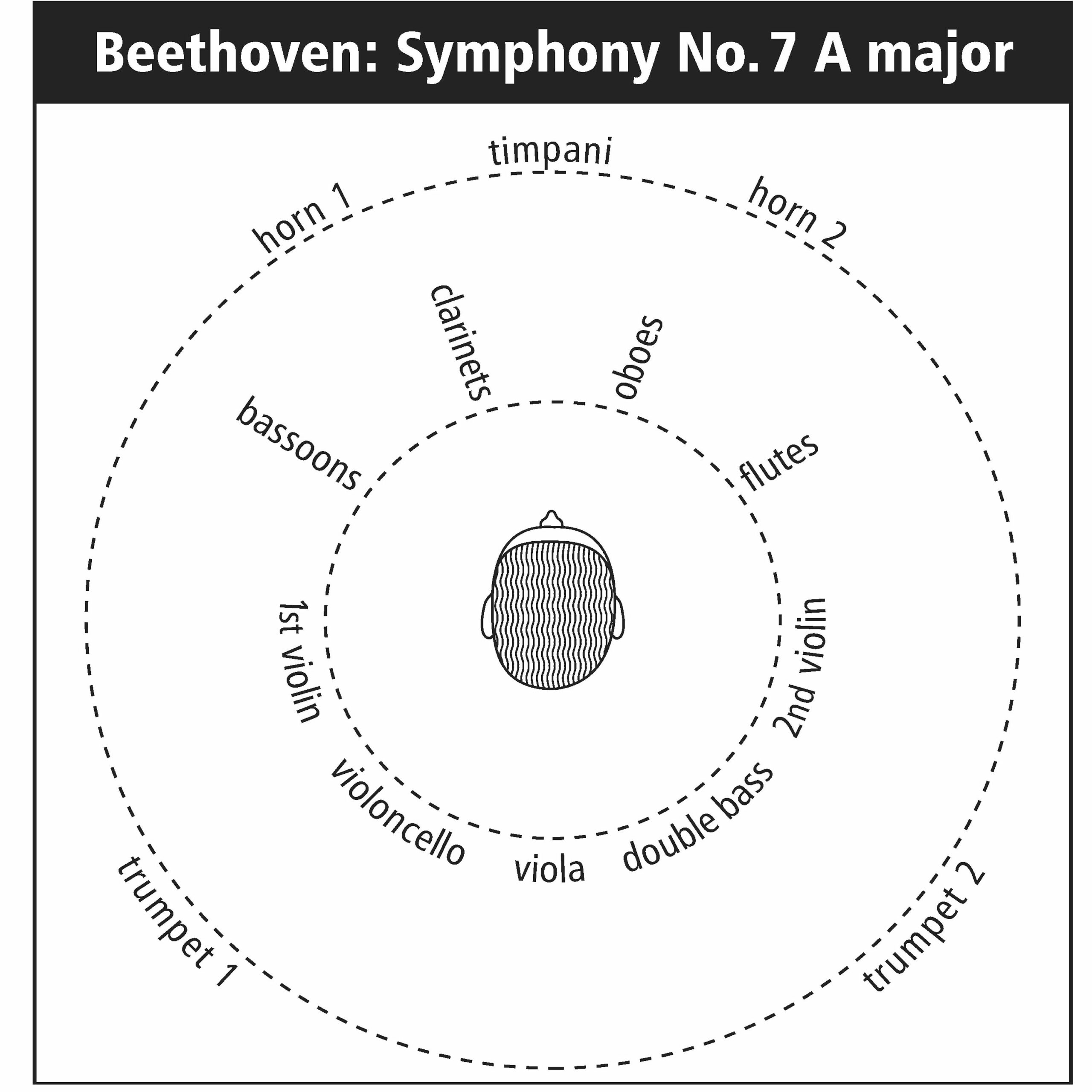
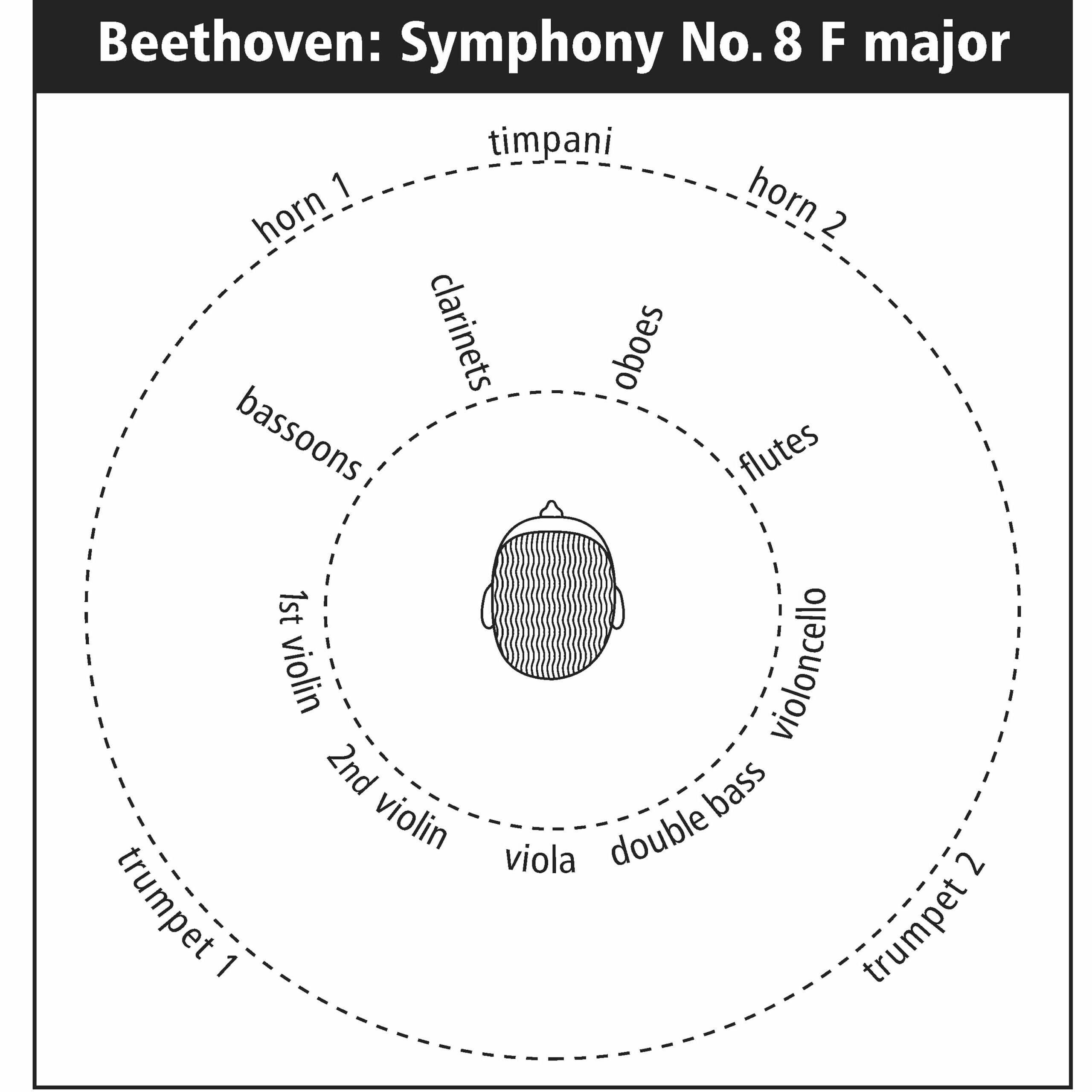
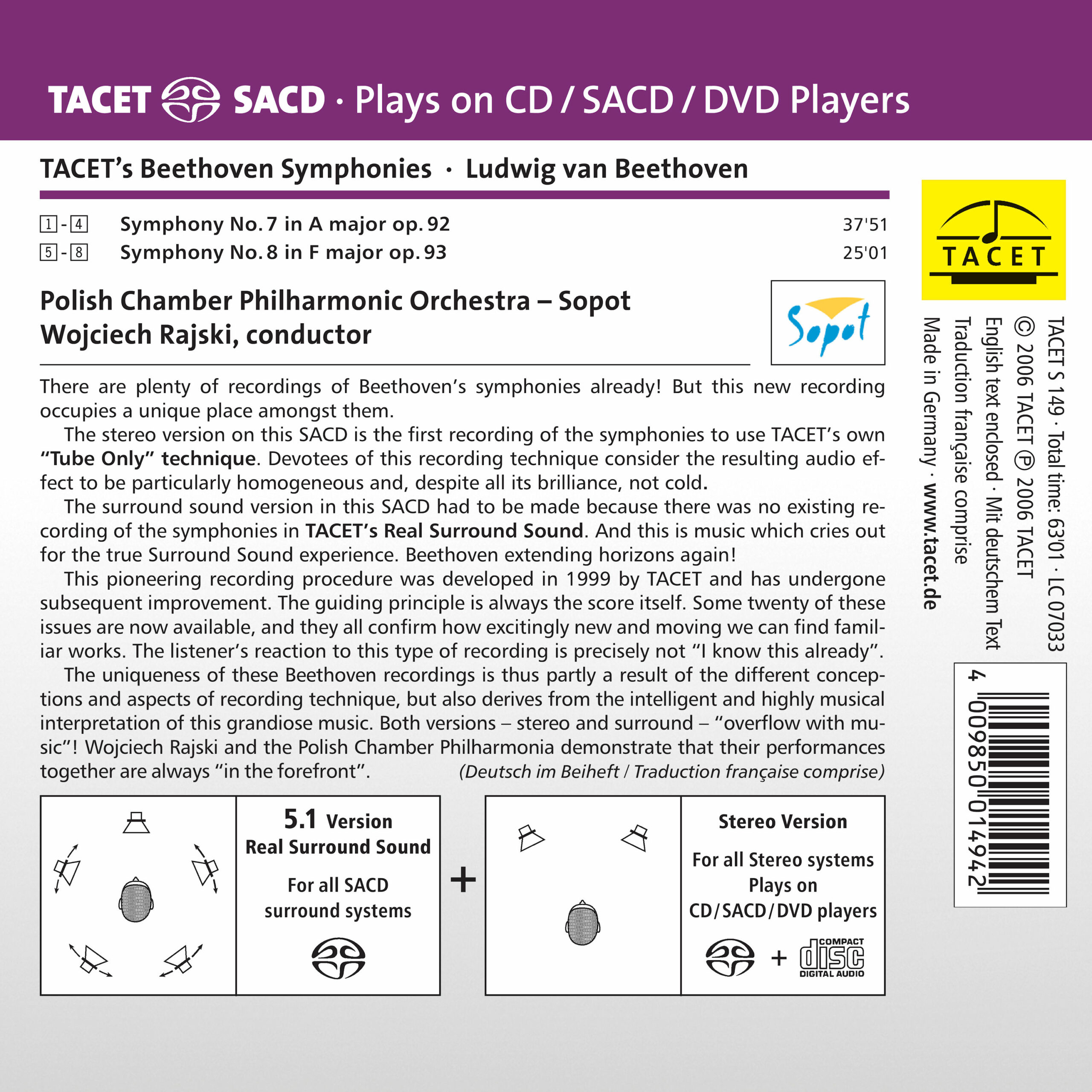

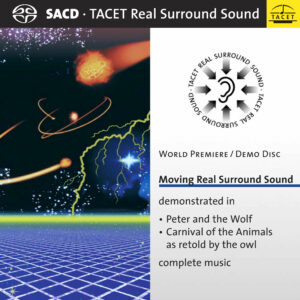
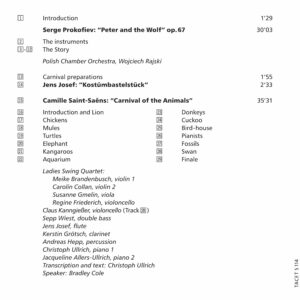
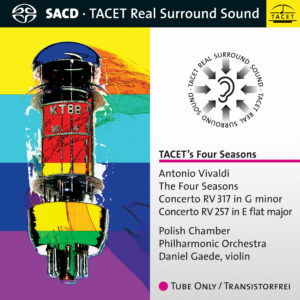
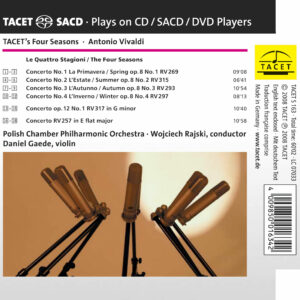
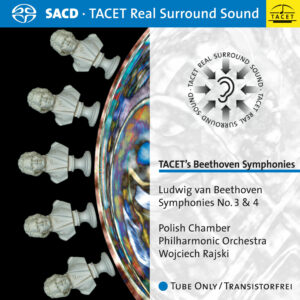
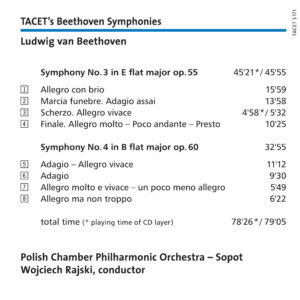
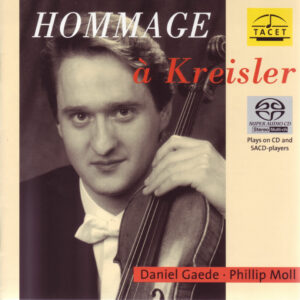

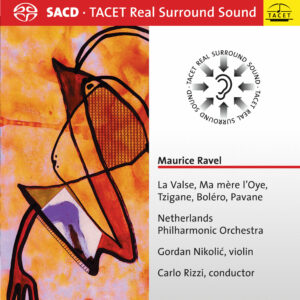
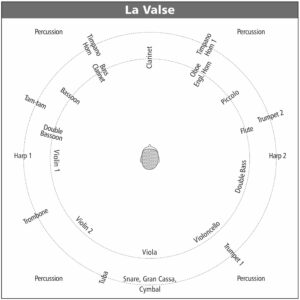

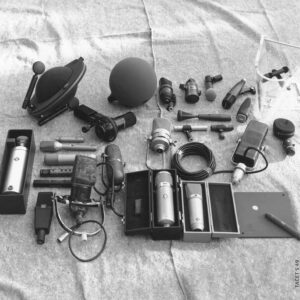
Jean-Marc’s Multi-Channel Recordings Reviews –
--> original review
(...) If I would have to use a single word to try to describe this recording I would use the word energy, this recording is bursting with sound energy rhythm and color. The second word I would use is clarity, we hear a staggering amount of music details throughout the whole recording. I would qualify TACET genius tonmeister Mr Andreas Spreer of emeritus sound sculptor.
(...) Another thing I have to say about this recording is the quality of the sound take of the instrument themselves. For example I have never heard tympani so well recorded. For the winds (such as flute and french horn) I would try to describe a sense of projection of the sound and air around the instrument. We feel a bit in the orchestra, but in a perfect acoustical setting where each instrument has space to bloom. For the strings the texture is very natural and sweet (no metallic aggressiveness) and there is a very distinct sense of size between the lower strings, altos and violins, it is impossible to mismatch them.
I have listened to this recording at least 20 times, and many times with a condensed score. I do not think it is necessary to read music to appreciate it. But in this case it was really nice to follow the score and hear so much of what is on paper, all the change of dynamics and the inner musical lines are all there.
The conductor Mr Rajski extracts the maximum from his orchestra. It is a strong interpretation with a focus on respecting the score in terms of tempos, nuances and rhythm. My only small regret is that the Polish Chamber Philharmonic Orchestra is not the Berlin Philharmonic. This is more obvious in certain solo passages or in certain fast string sections. Nonetheless this is playing of a very high order which is superior to probably 90% of the Beethoven Symphony recordings. (...)
Jean-Marc Serre
Pizzicato –
Immersed in pure Beethoven sound
Where should I begin? With the music or the technology? Both are equally thrilling! Recorded without transistors and presented in Tacet Real Surround Sound, these Beethoven symphonies are something truly extraordinary. Sitting right in the middle of a Beethoven symphony guarantees a fresh listening experience—and feels anything but unnatural. The wind instruments in particular take on a completely different character: they emerge more individually in the discourse and have something far more personal to tell us than in the overall sound one normally hears in the concert hall. And in the final movement of the Seventh Symphony, when the orchestra unleashes its fortissimo, a physical vibration sets in, adding yet another dimension to the experience of sound.
But let’s not forget the interpretation amid all this talk of technology. The orchestra’s playing comes across all the more clearly thanks to the recording process: it’s risky music-making without a safety net or double bottom. The musicians expose themselves so directly to our ears that any slip would be instantly audible. And I’ve sat in orchestras often enough—or right next to them—to know how ragged an ensemble can sound up close, even when it projects a fine, homogeneous tone in the hall. The Poles, however, play flawlessly even for the listener sitting right among them, proving themselves to be a first-rate team.
Wojciech Rajski places great emphasis on pulsating, richly accented, transparent, and always tension-filled music-making, while still allowing Beethoven’s symphonies to flow with complete naturalness. That marks a clear difference between Rajski’s Beethoven and the version Giovanni Antonini recently presented on Oehms Classics. Even the much-neglected Eighth—how rarely it is performed!—is delivered here with brilliance. The first movement has irresistible drive and unfolds in a wealth of sonorities seldom heard. The second dances along with sensuous grace, while the third propels us spiritedly into the furious finale. A splendid fête of sound!
RéF
sa-cd.net –
--> original review
For many years my objective in setting up a music-listening room has been to recreate the concert hall experience as closely as the technology and my pocket book would permit. Accordingly, when I purchased this disc after reading several very favorable reviews, I was nevertheless fully prepared to trash it as gimmicky nonsense. The idea of parts of the orchestra being located to the side and behind the listener location struck me as being ludicrous. Well, my preconception was wrong.
The effect of this recording is to immerse the listener in the music, clarifying details to an unprecedented degree. As an example, at the end of the last movement of Beethoven 7, there are sustained wind chords that must be clearly balanced against the rest of the orchestra as the music surges forward. This is accomplished magnificently - better than I have ever experienced it. Against all expectations, the sound is both natural and musical.
The performances themselves IMO are very fine - sensitive and exhilarating when call for. If you can stay in your chair at the end of the seventh, you have more self control than I have. One could perhaps wish for slightly larger string sections, but this is my only minor complaint. It doesn't even warrant subtracting half a star. The overall effect is that good. I can only imagine how much the symphonies of Schumann could benefit from this approach. Tacet, are you listening?
This should probably not be you only versions of these two scores. If you listen in stereo, either loudspeakers or headphones, take a pass on it. For others, if you take the plunge, keep an open mind: you may be in for a pleasant surprise.
Brian Smith
Classical CD Review –
(...) Another knock-out audio experience is Tacet′s remarkable surround sound issue of Beethoven′s Symphonies 7 and 8 with Wojciech Rajski conducting the Polish Chamber Philharmonic Orchestra-Sopot. These dynamic performances are recorded with imaginative use of surround sound. The listener isn′t in front of the orchestra, he is inside it. The acoustic is reverberant but highly detailed and one is immersed in the performance. Totally enjoyable, and a treat for surround sound buffs.
Robert Benson
sa-cd.net –
--> original review
This is without doubt an excellent addition to the Beethoven catalogue with Rajski giving some of the most vibrant readings of these two magnificent symphonies that I have heard in a long while. No mention is made of whether the Barenreiter/Del Mar editions are employed but this is not important with music making of such vitality. This is playing that is as close to ideal on the chamber orchestra scale as I can imagine - I fully appreciate though that some wouldn't want to be without a more weighty sound (and nor would I!)
As this is intended to be a complete cycle of the symphonies, I hope they will also tackle the overtures and concerto's, the most obvious competitors on SACD are LSO/Haitink (LSO Live) and Minnesota/Vanska (BIS). This is recorded (on the MCH layer, of which more later) in a very different way but the performance has very different characteristics; the Polish Chamber Philharmonic Orchestra of Sopot are a genuine chamber orchestra and consequently much smaller scale than either of the competing cycles. This means on occasion, where noted, that sometimes the bass sound is a tad light but on the whole is very refreshing and reveals things in a manner that used to be the province only of HIP performances but combined with rock solid tuning and tone.
Starting with the seventh, after a suitably imposing (but not overly grand) opening the first movement genuinely dances away in quite an exhilarating fashion. The oboe "cadenza" is tastefully extended and the only thing that might be judged lacking is a certain weight from the bass, most noticeable perhaps in the great build-up to the coda. The famous Allegretto is not treated like a slow movement in any way - perhaps the best way to describe it might be that of an unfit person gingerly recovering after the exertions of the first movement - phrase runs beautifully into phrase on both a micro and macro level. The third and fourth movements give no doubt that the orchestra is a wonderful bunch of players - such musical athleticism has rarely been employed so tastefully. Tempi are very well done so that even the "Assai meno presto" [trio] of the Presto [scherzo] can dance in a very graceful and lilting manner while the exuberance of the remainder is quite extraordinary. In the finale, some might find the strings a little lacking in body but I found it most exciting. The build up in tension as we near the final coda is marvellous and the pay-off with the woodwinds coming through, naturally, loud and clear is excellent.
The eighth symphony is no less successful and Rajski manages to provide some element of the dance to the first movement whilst keeping much of the majesty of this oft-mistakenly described "little" symphony; truly this is a recording in which "Allegro vivace e con brio" means exactly that. The clock-like second movement is wonderfully precise with a suitably brisk pacing that allows the comedic aspects of the "Allegretto scherzando" to register with the listener. The "Tempo di Menuetto" is just that - danceable but not too energetic. The finale is very light on its feet but the attack of the strings at times is ferocious even if their number means there is just enough weight in the fortissimo passages.
The MCH recording might, in particular, prove the most controversial aspect of this issue for many. Although the approach that Tacet have adopted is far from natural, it is certainly exciting and thought-provoking; I have never heard so much detail come through because their approach in these works and it certainly makes for a more active listening experience than usual when the ears are dragged back and forth between the different sections of the orchestra. Two different MCH layouts are adopted, and each involves two concentric circles in which the listener is placed centrally.
Symphony No.7
Outer circle: Horn 1 (FL), Timpani (Centre), Horn 2 (FR), Trumpet 1 (RL), Trumpet 2 (RR)
Inner circle: Bassoons, Clarinets, Oboes, Flutes (front from left to right) and 1st violins, Cellos, Violas, Basses, 2nd violins (rear left to right)
Symphony No.8
Outer circle: Horn 1 (FL), Timpani (Centre), Horn 2 (FR), Trumpet 1 (RL), Trumpet 2 (RR)
Inner circle: Bassoons, Clarinets, Oboes, Flutes (front from left to right) and 1st violins, 2nd violins, Violas, Basses, Cellos (rear left to right)
Careful set-up of a MCH system is needed or else the recording can quickly sound cavernous - a curious characteristic that is not present on the stereo layer. Apart from the spacing issues, Tacet provide us with beautiful sound. I'll award 5 for stereo, 5 for MCH but caveat this as many would be tempted to give the MCH layer 0! If you're open-minded (or should that be brave?) enough, give it a try - it really is astonishing.
Overall this is hugely enjoyable playing of great music that I cannot recommend too highly for those that want a chamber orchestra approach as opposed to a symphony orchestra. The MCH layer may prove to be an issue for some but I would strongly encourage at least one listening in this manner as it is completely involving; the stereo layer is wholly recommendable for those that the MCH layer would prove an anathema.
John Broggio
Thomas Hintze –
(…) Having just returned from the HighEnd, I listened to the two symphonies in multichannel, and I have to say quite honestly—it was an experience. With stereo one also speaks of “transparency,” but here you can take that quite literally. It reaches you on such an emotional level that it’s impossible to resist. At the same time, I must praise the orchestra: it has tremendous drive when needed, yet also a fantastic discipline, which becomes instantly apparent in the slower movements. So, if you could put me on the mailing list for new releases, I’d be delighted. When will the next Beethoven symphony be coming out— which one, and when?
Mit den besten Grüßen
Ihr Thomas Hintze
Audio –
Audio Live Klang Tipp
AUDIO readers already got a taste of these exhilarating Beethoven recordings with Listening Course CDs 3 and 4. The SACD mixes now make the enjoyment complete. Even the stereo track—recorded entirely with tubes—reveals a technical tour de force: warm and rounded, yet brilliant and transparent. The unusual “TACET Real Surround Sound” multichannel version literally surrounds the listener: you are sitting right in the middle of the orchestra.
Lothar Brandt
Klassik heute –
Right from the introduction, the “poco sostenuto” of Beethoven’s Seventh Symphony, ears prick up: we are used to hearing it slow and measured; here, however, it is taken with a lively motion, entirely free of false heaviness. What follows is a wonderfully pulsating, highly urgent Vivace. This approach—treating Beethoven as always animated, tense, accented, and pointed, without lapsing into monotony or making tempo itself the key parameter of interpretation—shapes the performance of both symphonies. With such joy in playing, such cheerfulness, and a dramaturgy in which no detail of a movement is lost, I have experienced Beethoven in this country only with the Bremen Chamber Philharmonic under Paavo Järvi. The Polish Chamber Philharmonic offers a Beethoven free of false heroics, at times impetuous in gesture, vigorous and inspired, both symphonic and chamber-like.
The technical hallmark of this production, recorded in July 2005 at the Stella Maris Church in Sopot (Poland), lies in its recording method. Using the “Tacet Real Surround Sound” system, developed in 1999, the entire listening space is enlisted for the musical experience. For this purpose, the orchestra is arranged all around the listener—horns, timpani, and woodwinds at the front, strings behind, and trumpets at the very back. In the Seventh Symphony, the first and second violins sit opposite each other; in the Eighth, they sit side by side. The “Tube Only” technique, employing just two tube microphones, one tube amplifier, two passive controllers, and converters, ensures an exceptionally short signal path. The “true” result—surround sound (5.1 version)—can, of course, only be heard with a system equipped with five (or six, with subwoofer) loudspeakers. Yet even in “conventional” stereo with two speakers, this Beethoven sounds vivid, direct, full-bodied, and always transparent. After such a furious start, one eagerly awaits the forthcoming Beethoven recordings of the Polish Chamber Philharmonic under Wojciech Rajski.
Peter Heissler
Audiophile Audition –
We usually try to list the overall title of discs when they are given one, but in this case I held back. Because this one is billed as "Tacet′s Beethoven Symphonies." No sense getting confused with all those other Beethoven Symphonies out there. Tacet wants to promote that their discs are unique. And truly they are.
This one has two features you won′t find on most other Beethoven symphony CDs: It is part of the label′s Tube Only/Transistor Free series - using tube microphones and tube mic preamps (no information is provided on whether the recording medium is also tubed). (Another useful bit information would be what or where is Sopot?) Only the stereo CD and SACD options on the disc used the tube mics. The other feature is that on the surround sound layer, Tacet uses their Real Surround Sound technique, which seeks to use the entire acoustic space for the musical experience - not just employing the surround channels to convey the ambiance of the venue. In string quartets, one player is placed at each of the four corner speakers, for example. In the case of these two symphonies, the spatial positioning is as though the listener was a member of the orchestra. The woodwinds are directly in front of you close up, the horns and percussion further away in front, the strings close behind the listener and the trumpets at the distant back.
As stated in the note booklet, this approach certainly does extend horizons when listening to Beethoven! I found the rear horizon definitely too close with my identical front and rear speaker channels all set with a test disc to the same volume level. I had to reduce the surround speakers by 2 dB to get a good balance with the frontal three channels. I hadn′t run into this on previous Tacet Real Surround SACDs. But after balancing I found I really enjoyed the Seventh - my favorite Beethoven symphony anyway. The dance-like aspect of much of it seemed even more pronounced than usual. This is clearly not the Berlin Philharmonic or BSO, but the playing hews to a high standard throughout.
It was difficult to do a comparison between the tube-recorded options and the solid state since the latter was multichannel (and overbalanced towards the rear at that) and the former only 2-channel. The strings did sound more pleasant in the tube versions - both the CD layer and the SACD layer. There was more bloom on the bass drum whacks. In general, just a bit more of that overused term "musical." But the surround presentation - especially due to the excitement of being plopped into the midst of the orchestra - still held my interest, and since my front three channels are powered by tubes, I still listened thru those lovely musical bottles regardless!
John Sunier
sa-cd.net –
--> original review
Performance 5 stars (highest rating) Sonics (MC) 5 stars
Now, without wishing to go OTT about it, this is one SACD which I think I can unreservedly recommend to EVERY reader of this website who likes classical music. I′d personally go so far as to rate it as probably the most important issue sound-wise I′ve come across in listening to multichannel CDs, indeed in my entire adult listening experience (stretching back thirty years now).
Why? Well, what we have here is a potentially revolutionary way of using the still relatively new idea of multichannel technology in the realm of recorded classical music. Many of you will be familiar with the name of the firm – TACET, a small independent label based in Stuttgart, Germany. For seven years now they have been experimenting with the potential uses of multichannel, and have developed what they call „TACET Real Surround Sound“.
What is that? Their basic idea is that NOT ENOUGH use is made of rear channels in the typical MC classical recording – „It does not make full use of SACD“, as TACET owner and chief producer Andreas Spreer puts it.
TACET′s approach is to carefully plan microphone set-ups according to the piece of music being recorded, then use the rear speakers proactively in the final mix-down, placing individual instruments or groups of instruments predominantly in them, thereby opening up the acoustic soundstage possible when using 5 full frequency speakers in a 5.0 or 5.1 system.
I was initially very sceptical. SURELY it would sound contrived to have instruments coming at my ears from behind me? SURELY the performance would sound unrealistically sectionalized? It sounded to be an artifical contrivance, or a gimmick.
Then I bought TACET′s DVD-A of „French String Quartets“ (some TACET releases are DVD-A, some SACD, some both), and was converted. There is indeed in that recording strong spatialization of the four instruments (first + second violins predominantly in L + R front speakers, viola and cello predominantly in L + R rear).
It SOUNDS weird, but actually the impression is wonderful, and wonderfully musical. The effect is not at all aggressive on the ear, or even unnatural – on the contrary, it′s very intimate, drawing you confidentially into the music, making you aware as never before in my experience of ist subtle balances, conversations and interactions. Spreer again – „The positioning of the musicians might appear synthetic, but the sound is not!“ That is it, in a nutshell.
Of course it helps that the Auryn Quartet′s performances of the Debussy, Ravel and Fauré Quartets on this programme are of the highest quality, and they are. I′d rate this the finest chamber recording of goodness knows how many thousands of LPs, CDs, SACDs etc. I have in my collection. It′s a WARM sound, which positively invites you to ENJOY the music.
So – does the same full-channel-five technique work with the much greater challenge of a full orchestra in the two Beethoven symphonies on this new TACET SACD?
It does. The disposition of instruments around the 5 speakers differs a little between Symphonies 7 and 8, but is basically woodwinds and timpani predominantly to the front speakers, lower strings and trumpets to or towards the rear speakers, and first and second violins balanced in between. In the 7th Symphony the first and second violins are placed L + R, the better to bring out Beethoven′s dramatically antiphonal writing for the two sections.
Again, before actually playing the disc, I was a little worried that all of this might sound contrived and artificial. It really doesn′t. You are placed in a listening position somewhat akin to that of a conductor on a podium – the magic being that, for some reason, the music does NOT crowd in on you aggressively as I imagine it might do if you actually WERE in media res, with a baton waving furiously in front of you.
The music is simply all around you, but not in a way that is distracting. Quite the opposite – as with the French Quartets disc, what you get is the impression of being closer to the music and ist processes that ever previously, hearing things you hadn′t heard before, or never fully appreciated. You seem much closer to the actual CREATIVE PROCESS itself, closer to how it must have felt to Beethoven as he actually conceived and wrote this music.
But SURELY, I hear you say, this is nothing like what you would hear in any normal concert hall? You′re right, it isn′t. But then, as Andreas Spreer would argue, neither is a conventional 2-channel stereo recording, however well executed.
And he′s right. ALL sound recordings are ultimately artificial – not the „real thing“ you hear when you go to an opera or a concert. Spreer′s argument is that ALL the possibilities of the new MC medium should be utilised to provide more and more rewarding listening experiences for the armchair listener. „The guiding principle“, he writes, „is always the score itself“, the aim to „confirm how excitingly new and moving we can find familiar works“.
That was exactly my reaction on hearing these Beethoven symphony performances. They′re splendid – taut, vital, energetic, very well played by the Polish orchestra, with crisp, incisive conducting by Wojciech Rajski.
The illuminations and excitements offered by the TACET engineering are too numerous to list in detail. I′ll give just one example – in the finale of the Seventh, the combination of excellent playing and the visceral effect of TACET′s engineering makes for an enveloping and elating listening experience. You really do feel the genius of the music burning at very close quarters.
In conclusion – no other company that I know of is doing what TACET are doing, and I very strongly commend this CD to your attention. For me, the improvement over even very good „conventional“ multichannel SACD sound recordings is greater than the improvements CD brought over LP (for those who think it brought any!), than stereo brought over mono (for those who think it brought any!), and possibly even than LP brought over 78s.
As I said at the beginning, this is potentially revolutionary. Buy, listen without prejudice, and I hope you like it! [TECHNICAL NOTE: it follows from what I′ve written above that your rear speakers should be very similar in quality to your fronts, as all 5 speakers are assumed to have access to the full range of normal recorded frequencies. If your rears are markedly inferior in quality you won′t get the full effect intended].
[P.S. There is also a straight stereo mix included on this SACD, using two Neumann M49 tube microphones, with no transistors in the transmission sequence].“
Terence Blain